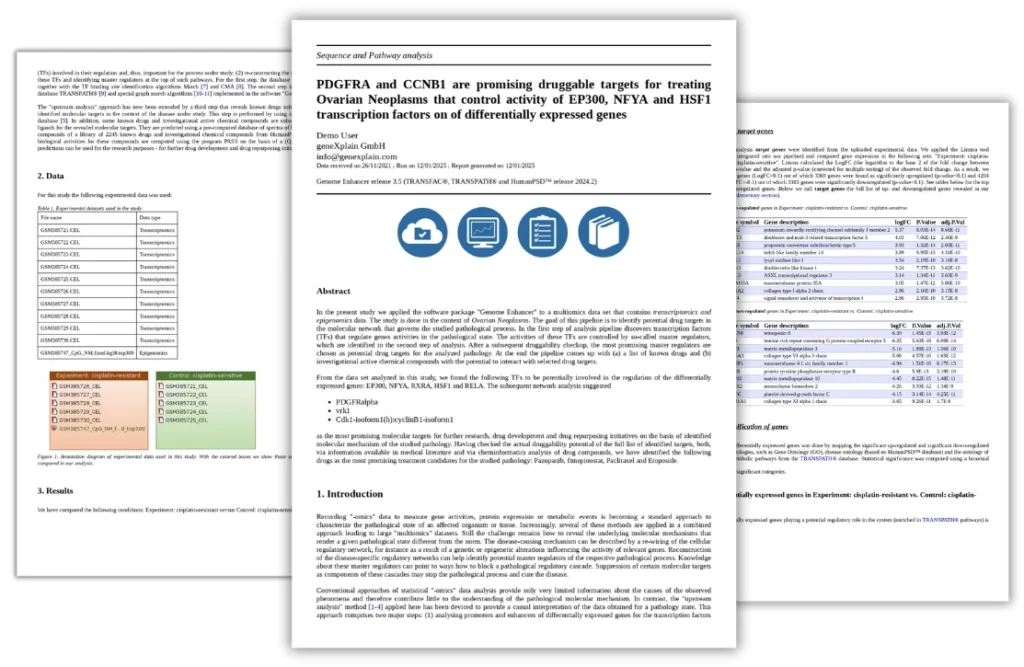Genome Enhancer
Welcome to the new era of Precision Medicine!

In addition to other TRANSFAC-, TRANSPATH- and HumanPSD-based tools, TRANSFAC DISEASES includes the AI driven Genome Enhancer, a fully automated pipeline for patient omics data analysis, which identifies prospective drug targets and corresponding treatments by reconstructing the molecular mechanism of the studied pathology.

Genome Enhancer provides a powerful synergism between the automatic pipeline for multi-omics data processing and the comprehensive bioinformatics toolbox of the geneXplain® platform integrated with the TRANSFAC, TRANSPATH, and HumanPSD databases.

